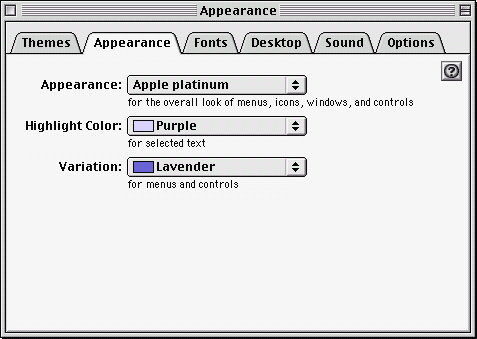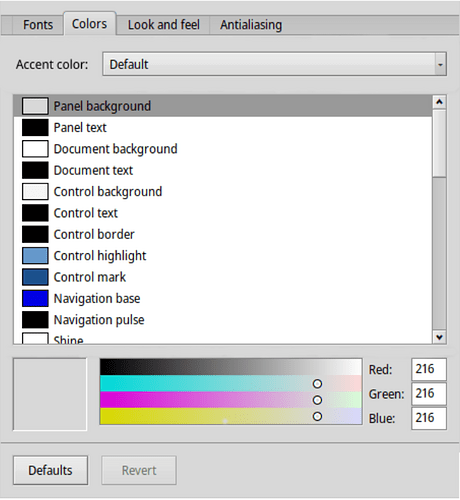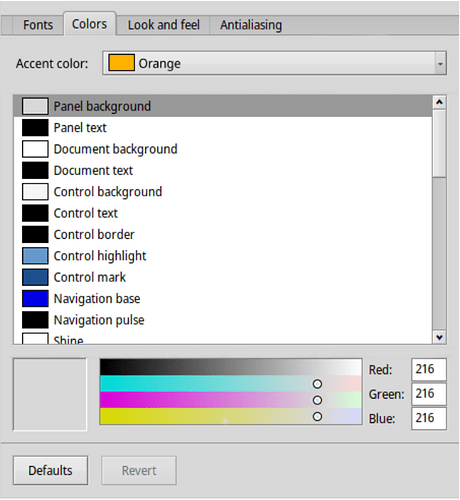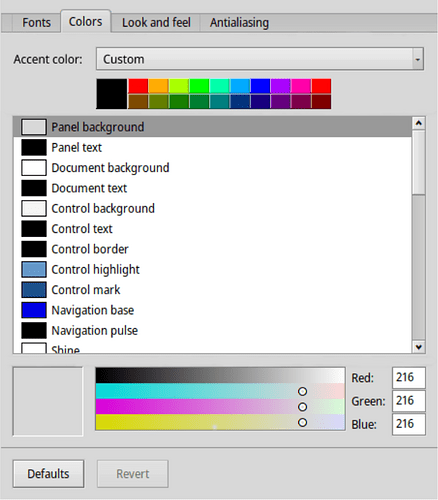There is an emerging trend of various desktops having accent colour settings, wherein some elements of the active colour scheme can be set to a specified colour from one place (e.g. highlights, selections, window tab, etc.). I think it may be a good idea for Haiku to implement it, since it simplifies customisation to the end-user a lot. It should be noted that this doesn’t necessarily have to replace changing elements of the colour scheme individually; that’s too useful for advanced or more discerning users.
Here’s a video from a KDE developer that explains the general concept of accent colours and shows off their implementation of it:
NOTE: The video is months old; accent colour preferences have since been merged in time for the upcoming KDE Plasma 5.23 release.
There is now an enhancement ticket for this, so that it can be tracked more easily by developers:
https://dev.haiku-os.org/ticket/17290
This came about from discussions regarding customising the appearance of Haiku in Matrix and IRC channels. It is hoped that this thread can generate some discussion on this proposed feature, especially how it could be designed and implemented in Haiku.
There are two possible places within the Colors tab in Appearance where accent colour settings could be placed:
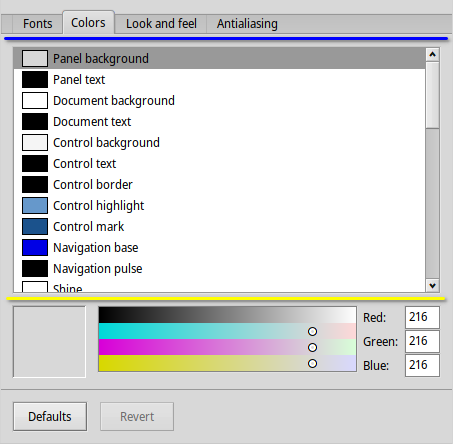
One the one hand, where the blue line is seems to be the most obvious choice to put it in. On the other hand, perhaps it could also be put where the yellow line is instead? This might allow for the colour sliders below it to be used for setting a custom accent colour.
Then there’s the matter of showing preset accent colours to users. Looking through some Haiku applications, I found this:
![]()
Some variation of this could be used for the accent colour settings. However, I’m unsure about the big square being discoverable enough that users will know that clicking it will open up a colour picker and let them set a custom colour. It may seem obvious enough for creative applications, but what about for system settings?
Anyways, looking forward to getting some feedback about this.

